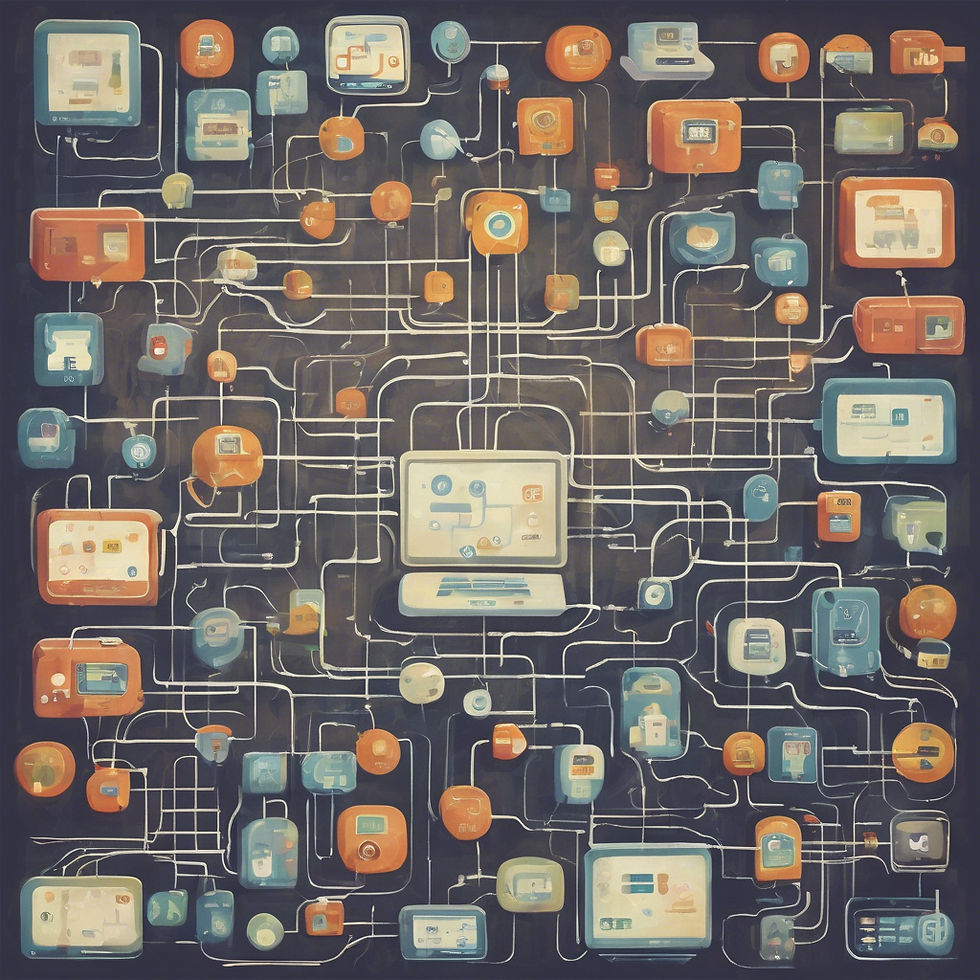Coding trends from the wisdom of crowds
- spwebsite123

- Apr 27
- 4 min read
The programming landscape has been moving at breakneck speed, driven by AI, shifting business needs, and developer preferences. To separate hype from reality, we analysed 12+ reports, including PYPL’s real-world search data, Stack Overflow’s 2024 Developer Survey, and industry forecasts. Here’s what’s rising, what’s fading, and what it means.

The PYPL Reality Check
The PYPL (PopularitY of Programming Language) Index, is one of the leading authorities on trends, as it tracks Google searches for language tutorials, and reveals what coders are actively learning—not just what companies claim to use.
At June 2024, it showed:
Top 5 Languages
Python (29% share)
JavaScript (18%)
Java (10%)
C# (7%)
Go (5.5%)
There are several reason why Python dominates.
AI/ML Boom: PyTorch, TensorFlow, and OpenAI’s tools rely on Python.
Ease of Learning: Still the #1 language for beginners (per Stack Overflow).
Versatility: From web dev (Django) to data science (Pandas).
The Big Movers, however, are:
Go (+2 spots): Cloud-native development (Kubernetes, Docker).
Rust (growing fast): Memory safety critical for systems programming.
We also found some differences in the emphasis of these reports. A few examples are shown below.
However, the consensus was that AI and cloud skills are non-negotiable.
The debates are now how quickly today's adoption curves continue and when will niche trends (e.g., quantum) go mainstream. (We cover both in future articles).
Key Drivers Shaping Coding Trends
To understand the prognosis for different skill sets and roles, several macro-scale drivers are shaping demand for coding skills:
AI & Automation is Accelerating and Replacing (Some) Coding:
This is clearly one of the most discussed trends. In a webinar given by start up incubator, YCombinator, the founder estimated that over 90% of the code written by their start up community was AI-generated. Not only are coders using AI, but they are adopting it avariciously.
e.g. We are seeing a growth in AI-Assisted Coding (GitHub Copilot, Amazon CodeWhisperer). Prompt Engineering skills, giving the ability to write precise LLM instructions, is a rising skill. Boilerplate Coding is on the wane as AI handles repetitive tasks (e.g., CRUD apps).
The Cloud-Native Revolution
The Cloud-Native Revolution is transforming software development through the adoption of scalable, modular, and automated infrastructure. Meanwhile, traditional monolithic architectures are declining as businesses phase out legacy systems
e.g. Growing technologies include Go & Kubernetes are in demand as infrastructure-as-code (IaC) demand surges. Serverless (AWS Lambda, Azure Functions) computing is also growing with 40% of enterprises adopting it (Pluralsight).
Cybersecurity Drives Language Shifts
The growing focus on cybersecurity is reshaping coding skill demands, with developers now expected to write secure-by-design code and integrate protections like encryption, input validation, and OAuth early in development.
Knowledge of DevSecOps and ways of automating security checks into CI/CD pipelines is becoming essential, as is familiarity with tools like static analysers (SAST) and dependency scanners (Dependabot, Snyk). Some growing language skills include Rust, which is now used in Linux kernels, Windows, and Firefox for memory safety. TypeScript (+12% YoY) is growing as enterprises prefer typed JavaScript to avoid runtime errors. PHP & Perl are declining due to security vulnerabilities.
The Green IT Movement
Green IT is driving demand for energy-efficient coding, pushing developers to optimise algorithms, reduce computational overhead, and minimise cloud resource usage to lower carbon footprints
Developers are increasingly becoming versed in energy-efficient algorithms: Companies optimise code to reduce data centre carbon footprints. Consideration is being given to the energy consumption of code. For instance, Python’s efficiency beats Java in energy use per task. Legacy code. which is costly to maintain and power-hungry, is on the decline.
Implications for Coders Today
Consequently, if following the trends, there are skills to learn now and ones to focus on less in future, with an anticipation that the demand declines.
Example skills to Learn Now
AI Collaboration: Master tools like Copilot—but focus on debugging AI outputs.
Cloud-Native Languages: Go, Rust, and TypeScript are safer bets than legacy Java/C++.
Cybersecurity Basics: Even frontend developers need to understand, say, the "OWASP Top 10".
Example skills to focus on less
jQuery: Modern frameworks (React, Vue) replaced it.
Objective-C: Apple’s full shift to Swift is imminent.
There are also implications for career decisions e.g.
Specialise or Hybridise?:
Specialist: Become a Rust security engineer.
Hybrid: Combine Python + cloud certs (AWS/Azure).
Following the money?
There are highly lucrative roles in the different parts of the coding profession, and also in different companies across the world e.g. US-based AI/ML Engineers and DevOps Architects can regularly earn $150k+.
Summary
The future of coding isn’t just about learning languages—it’s about solving business problems with the right tech stack, and being part of organisational capabilities that maintain a competitive advantage due to the ability to integrate tech.
Python and AI tools are today’s staples.
Adaptability and strategic business focus will separate long-term winners from the rest amongst coders.

Comments